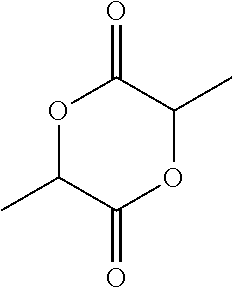Composition for the prevention or removal of insoluble salt deposits
a technology of insoluble salt and composition, applied in the direction of detergent compounding agents, inorganic non-surface active detergent compositions, complex/solubilising chemicals, etc., can solve the problems of calcium or magnesium silicate deposits, difficult to clean, and deposits in places, so as to reduce the level of alkyl benzene sulfonate, good foaming, and good environmental profil
- Summary
- Abstract
- Description
- Claims
- Application Information
AI Technical Summary
Benefits of technology
Problems solved by technology
Method used
Image
Examples
example 1
[0117]Tartaric (Sigma-Aldrich), malic (Sigma-Aldrich), glycolic (Dupont Chemicals), itaconic (Alfa Caesar), lactic (Purac), succinic (Sigma-Aldrich) and citric (Brenntag) acid were tested according to the protocol found in the article “Empfelungen zur Qualitätsbewertung fur saure WC-reiniger” (Qualitatsempfelung des Industrieverbandes Korperpflege-und Washmittel e.V. (IKW), Referat Putz-und Pflegemittel, Frankfurt a.M., paragraph 6 Gebrauchswertprüfung. SÖFW-journal, 120, Jahrgang 13:94) for their descaling efficiency upon short exposure.
[0118]For each product, five oven-dry marble plates (Carrara marble, 75×150×5 mm, bought at Van Houten Malle) are weighted on a high precision balance and subsequently completely immersed during 10 seconds in a glass beaker holding 950 milliliter of a 5% active matter acid solution. The plates are then removed from the liquor, and put in upright position for 10 minutes during which the acid is allowed for further action. The plates are subsequently ...
example 2
[0123]Similar to example 1 the descaling efficiency upon prolonged contact to the same range of acids is determined. This is done in duplicate with fully immersed marble blocks ((Carrara marble, 20×30×30 mm, bought at Van Houten Malle) according to the modified protocol of “Qualitätsnormen für saure WC-reiniger” (Qualitätsnormen des Industrieverbandes Putz- and Pflegemittel e.V. (IPP), Frankfurt / M (Fassung 1987)), again monitoring weight loss but this time after 24 hours immersion in the acid solution, followed by rinse-off and drying.
[0124]
AcidAverage weight loss (g)Tartaric acid0.3141Malic acid8.73535Glycolic acid2.62915Itaconic acid9.6414Lactic acid9.05985Succinic acid9.30385Citric acid3.8461
[0125]Tartaric acid fails again, but this time glycolic and citric acid underperform as well. The other tested acids are more or less equivalent, but again itaconic acid is performing best among the tested solid acids, in fact best of all the tested acids. The marble blocks exposed to tartari...
example 3
[0126]The experiments of example 1 and 2 were repeated with the same set of blocks and plates for itaconic acid (5%), lactide (3%), lactide (5%), citric acid (5%) and succinic acid (5%). Solutions were allowed to stand until complete dissolution of the lactide before the descaling test was started.
[0127]The following results were obtained for short contact time descaling of plates and prolonged contact descaling of blocks (average values and 95% confidence intervals):
[0128]
WeightWeightWeightWeightWeightdifferencedifferenceWeightdifferencedifferencedifferenceplates (g)plates (g)differenceblocks (g)blocks (g)Descaling agentplates (g)−95%+95%blocks (g)−95%+95%Itaconic acid 5%0.11150.0884640.1346167.15866.28388.0334Lactide 5%0.13650.1009860.1719746.04455.47936.6097Lactide 3%0.11290.0822680.1435722.98442.17233.7964Citric acid 5%0.07820.0596370.0966833.31862.71133.9259Succinic acid 5%0.08990.0604630.1192977.24796.64057.8552
[0129]Lactide and itaconic acid again prove to be very efficient d...
PUM
| Property | Measurement | Unit |
|---|---|---|
| pH | aaaaa | aaaaa |
| melting point | aaaaa | aaaaa |
| temperature | aaaaa | aaaaa |
Abstract
Description
Claims
Application Information
 Login to View More
Login to View More - R&D
- Intellectual Property
- Life Sciences
- Materials
- Tech Scout
- Unparalleled Data Quality
- Higher Quality Content
- 60% Fewer Hallucinations
Browse by: Latest US Patents, China's latest patents, Technical Efficacy Thesaurus, Application Domain, Technology Topic, Popular Technical Reports.
© 2025 PatSnap. All rights reserved.Legal|Privacy policy|Modern Slavery Act Transparency Statement|Sitemap|About US| Contact US: help@patsnap.com


